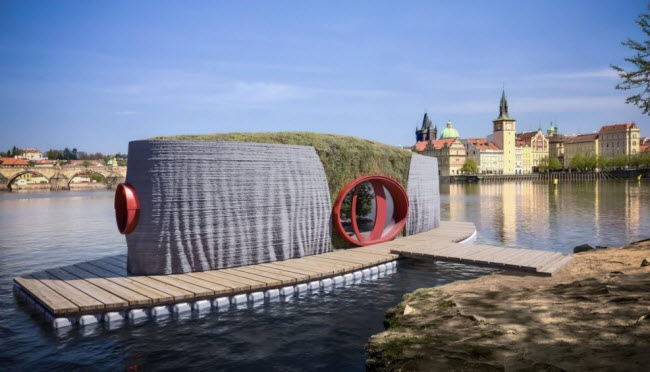As humanity evolved, technology became a fundamental part of daily life, making living easier and more efficient. In a world plagued by pollution and environmental threats, leveraging technology has become crucial to mitigating these risks. Studies indicate that 39% of global carbon emissions come from the construction industry, prompting scientists and experts to seek solutions to this pressing issue. One innovative response is the 3D-printed house, which not only boasts an attractive design and low cost but is also built with eco-friendly materials that significantly reduce carbon emissions, representing a revolutionary step toward a sustainable future.
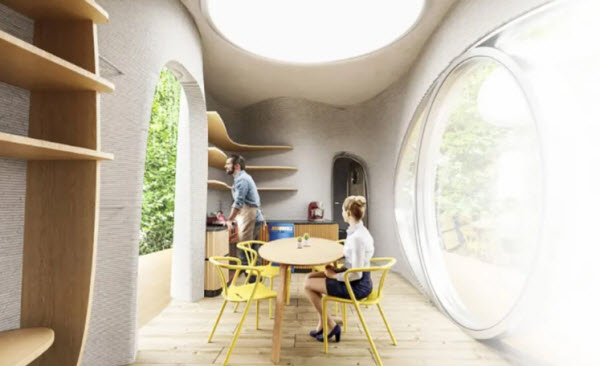
The Launch of the 3D-Printed House
In August 2020, the concept of the 3D-printed house was unveiled in the Czech Republic. The prototype was constructed in just 48 hours in the city of České Budějovice. Once the components were dried, they were transported to Prague, where the house was displayed floating on the Vltava River, showcasing this technological marvel to the public. According to Euronews, this project, named “Prvok od Buřinky,” was conceived by sculptor Michal Trpak in collaboration with Buřinka, a construction company specializing in 3D printing. The entire process of printing the house’s components took only 22 hours, and assembling the structure took less than two days. However, what truly sets this house apart is not just its rapid construction but its innovative, sustainability-focused design.
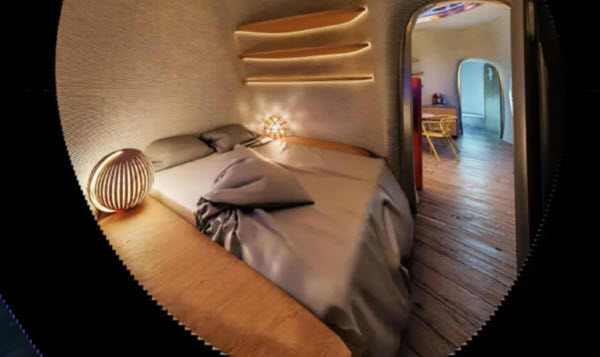
Features of the 3D-Printed House
The 3D-printed house generates its own energy using solar panels installed on its exterior. It employs heat pumps to transfer harvested energy inside, providing heating and hot water. The house includes a living room connected to an open kitchen, one bedroom, and a bathroom equipped with a shower that recycles water. It also has various tanks for drinking water, utility water, and sewage. This house is versatile, suitable for urban environments, as well as remote locations such as forests, due to its compact size of only 43 square meters.
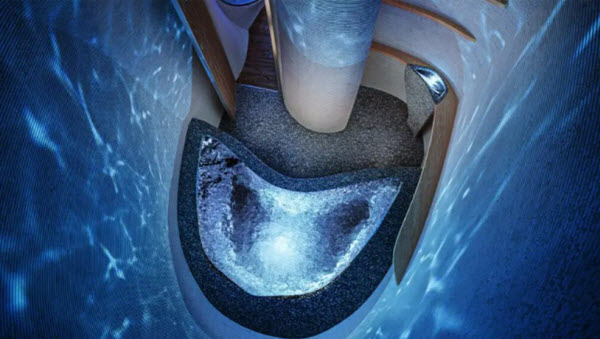
Constructed using a robotic arm, the house’s structure is made from a specially developed concrete mix, making the printed shell three times stronger than it would be with regular concrete. This durability allows the house to withstand extreme conditions, including avalanches. To ensure its robustness, the Experimental Centre of the Faculty of Civil Engineering at the Czech Technical University in Prague conducted comprehensive mechanical resistance tests, confirming its superior strength. According to the CEO of the company behind this innovation, compared to traditional brick buildings, the 3D-printed house emits up to 20% less carbon dioxide. This reduction is significant, even though it falls short of the European Union’s target of a 30% reduction by 2030. Additionally, constructing this house requires only about 25 workers, compared to the 65 needed for traditional building methods. The house’s design also allows for easy demolition and reprinting using the same materials, directly on-site, once it reaches the end of its life cycle.
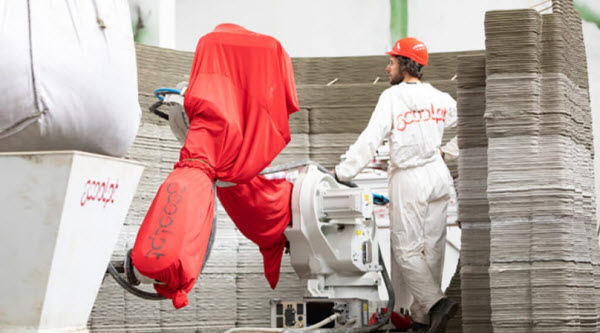
Implications for the Real Estate and Environmental Sectors
Given the importance of the 3D-printed house in both the real estate and environmental sectors, professionals in construction, including engineers and workers, are encouraged to explore this concept. The 3D-printed house is not only environmentally friendly and cost-effective but also offers a practical solution to the growing gap between the demand for construction and the decreasing availability of skilled labor. The company behind this project hopes that the 3D-printed house will be seriously considered as a viable option for future construction projects, contributing to a greener, more sustainable world.
